There's just something magical about the aroma of a golden, herb-infused turkey roasting away in the oven. This Herb Butter Roasted Thanksgiving Turkey Recipe brings together fragrant fresh herbs and rich butter to deliver juicy, flavorful meat that's bound to be your new holiday centerpiece.
Jump to:
- Why You'll Love This Recipe
- Ingredients & Why They Work
- Make It Your Way
- Step-by-Step: How I Make Herb Butter Roasted Thanksgiving Turkey Recipe
- Top Tip
- How to Serve Herb Butter Roasted Thanksgiving Turkey Recipe
- Make Ahead and Storage
- Frequently Asked Questions:
- Final Thoughts
- Herb Butter Roasted Thanksgiving Turkey Recipe
Why You'll Love This Recipe
This herb butter roasted turkey has become a personal favorite in my kitchen, especially for Thanksgiving. The way the garlic and fresh herbs melt into the butter and soak into the turkey skin is just heavenly. Plus, it’s surprisingly straightforward, even if you’re not a seasoned bird roaster.
- Deeply Flavorful: Fresh rosemary, thyme, and sage combined with garlic butter give the turkey an irresistible herbal aroma and taste.
- Perfectly Juicy: Roasting with the butter under the skin seals in moisture, making the meat tender and juicy every time.
- User-Friendly: The hands-on steps are simple, with practical tips to avoid dry turkey and tricky roasting pitfalls.
- Customizable: You can tweak the herbs and stuffing inside the bird to suit your personal holiday flavors or pantry staples.

Ingredients & Why They Work
Each ingredient here plays a special role to make this turkey stand out. The fresh herbs truly pack a punch, and butter acts as the carrier that keeps everything moist and tasty. Choosing the right turkey size based on your crowd is also key to getting perfect results.
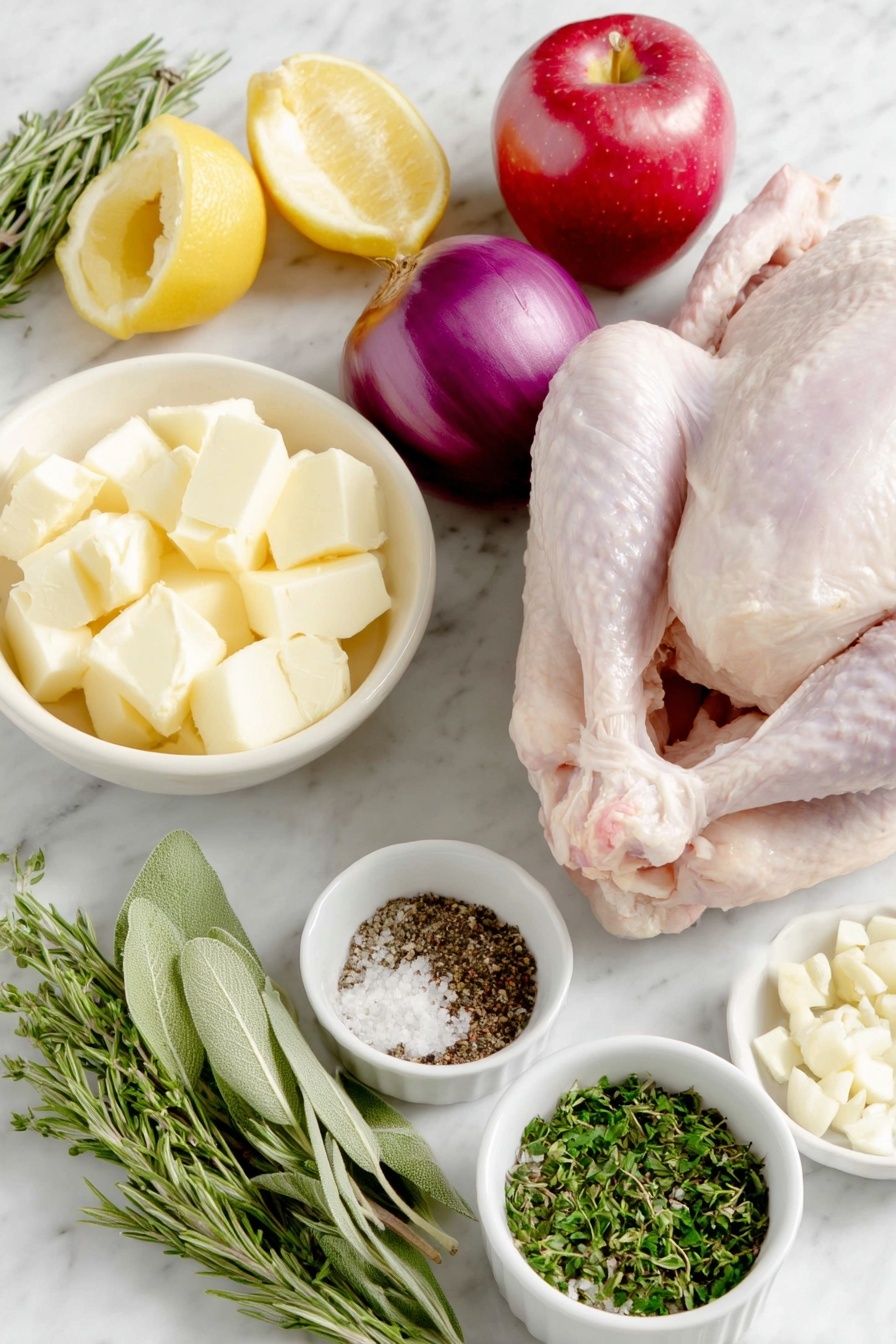
- Turkey: I recommend a fresh or fully thawed whole turkey between 12-20 pounds for even cooking and the best flavor absorption.
- Onion: Adds a mild sweetness and savory depth when roasted inside the cavity.
- Lemon: Brightens the flavor and adds subtle acidity to balance the rich butter.
- Apple: Using your favorite apple adds a hint of fruity sweetness that pairs beautifully with herbs.
- Fresh Rosemary, Thyme, Sage: These classic herbs bring an authentic Thanksgiving scent and taste; go for fresh when you can!
- Unsalted Butter: Softened to blend easily with herbs and garlic, it's the secret to moist, well-browned skin.
- Salt and Black Pepper: Essential for seasoning inside and out, helping the flavors cut through the richness.
- Garlic: Minced fresh garlic transforms this herb butter into a savory powerhouse.
Make It Your Way
I love adding little tweaks to this Herb Butter Roasted Thanksgiving Turkey Recipe depending on the year or what herbs I have on hand. You can absolutely personalize it to your taste or dietary needs, making it uniquely yours.
- Variation: Once, I swapped out sage for a bit of fresh tarragon and it gave the turkey a subtle anise-like twist that everyone raved about. Don’t hesitate to experiment a bit.
- Dietary Modifications: If you’re watching salt or dairy, consider using olive oil instead of butter and reduce added salt slightly.
- Seasonal Changes: In winter, I sometimes add cranberries or dried apricots inside the cavity for extra flavor complexity.
Step-by-Step: How I Make Herb Butter Roasted Thanksgiving Turkey Recipe
Step 1: Thaw and Prep Your Turkey
If your turkey is frozen, plan ahead and thaw it in the refrigerator—about 24 hours for every 5 pounds is a good rule of thumb. I usually give myself an extra day just to be safe. Remove the turkey from the fridge an hour before roasting to bring it to room temperature; this helps it cook more evenly.
Step 2: Make the Herb Butter
Combine softened butter with minced garlic, salt, black pepper, and freshly chopped rosemary, thyme, and sage. I usually measure out about a tablespoon of each herb for the butter and save the rest for stuffing inside the turkey—this keeps the flavors balanced and fresh.
Step 3: Prepare the Turkey Cavity
Remove the neck and giblets from inside the cavity (you can set these aside for gravy or compost). Pat the turkey dry with paper towels—dry skin helps the butter stick and crisp up beautifully. Season the cavity with salt and pepper, then stuff it generously with the quartered lemon, onion, apple, and leftover herbs for aroma and moisture.
Step 4: Layer Herb Butter Under the Skin
Use your fingers carefully to loosen the skin over the turkey breasts, separating it from the meat without tearing. Spread a few tablespoons of your herb butter under the skin—this is the magic spot where the butter melts into the meat during roasting, making those breasts extra tender and flavorful.
Step 5: Roast with Extra Herb Butter
Tuck the wings under the bird and place the turkey on a roasting rack inside a roasting pan. Warm the remaining herb butter briefly in the microwave (just until really soft, not melted) and brush it all over the turkey’s outside—skin, legs, and wings. Roast at 325°F, aiming for 13-15 minutes per pound. Start checking the internal temperature around 2.5 hours in.
Step 6: Tent and Rest
Once the skin is golden brown (usually halfway through), tent the turkey with foil to prevent the breast meat from drying out. When it hits 165°F in the thickest part of the breast and thigh, remove it from the oven and let it rest for about 20-30 minutes tented loosely on the counter or a cutting board inside a sheet pan to catch juicy drippings while you carve.
Top Tip
After years of experimenting, I know that getting the skin perfectly golden without drying the meat is all about the foil tent and keeping a close eye on the internal temperature. This simple step takes the stress off and ensures everyone gets juicy turkey.
- Butter Under the Skin: It’s a game-changer—don’t skip this step. It keeps the breast meat moist while adding incredible flavor.
- Room Temperature Turkey: Bringing the bird out of the fridge before roasting leads to even cooking and less risk of overcooked edges.
- Halfway Foil Tent: I learned this the hard way—starting uncovered and then tenting once golden protects against burning while still getting a crisp skin.
- Resting Time: Don’t rush carving! Resting lets the juices redistribute so your turkey slices stay juicy.
How to Serve Herb Butter Roasted Thanksgiving Turkey Recipe
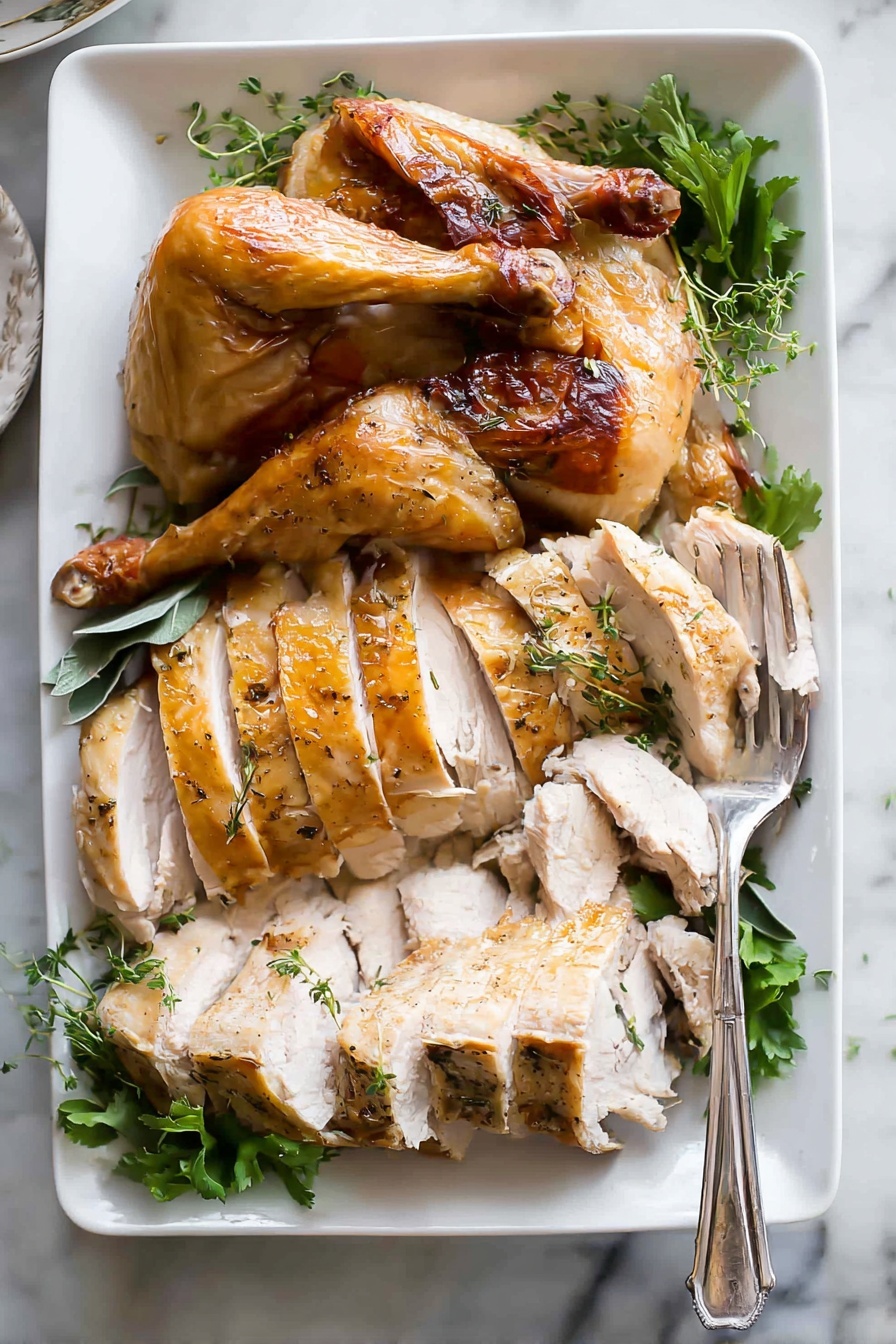
Garnishes
I like to scatter fresh herb sprigs—like rosemary and thyme—around the platter along with a few lemon slices for a fresh look and subtle aroma at the table. It adds that inviting, festive touch I always appreciate when guests gather.
Side Dishes
This turkey pairs perfectly with creamy mashed potatoes, classic green bean almondine, and a vibrant cranberry sauce. I’m partial to buttery dinner rolls and a savory stuffing cooked separately to soak up those wonderful herb notes.
Creative Ways to Present
For a special occasion, try serving the turkey on a wooden carving board surrounded by roasted root vegetables and colorful fresh herbs. I once added small bowls of complementary herb butters and flavored salts around for guests to customize their slices—it was a huge hit!
Make Ahead and Storage
Storing Leftovers
After your feast, I store leftover turkey slices in airtight containers in the refrigerator. Adding a little turkey broth or drippings helps keep the meat moist when reheating. I find it’s best to eat up within 3-4 days for optimal flavor.
Freezing
I’ve frozen leftover turkey many times by wrapping slices tightly in foil and placing them in freezer bags. They keep well for up to 3 months. When you’re ready, thaw overnight in the fridge before reheating gently.
Reheating
To reheat, I cover turkey slices with foil and warm them in a low oven (about 300°F) or microwave with a splash of broth to keep from drying out. Low and slow is the way to maintain that tender texture.
Frequently Asked Questions:
Yes! If you don’t have fresh herbs on hand, substitute 1 teaspoon of dried herbs for every 1 tablespoon of fresh herbs called for. However, fresh herbs give the best flavor and aroma.
Using a meat thermometer is the safest bet—aim for an internal temperature of 165°F in both the thickest part of the thigh and the breast. This ensures the turkey is cooked through but still juicy.
You can make the herb butter in advance and keep it refrigerated. Also, gently loosening the skin and spreading some of the butter under the skin a few hours before roasting can save time. Just keep the turkey refrigerated until it’s roasting time.
The key is butter under the skin and tenting with foil once the skin is golden. Also, letting the turkey rest after roasting locks in juices. Avoid overcooking by monitoring the internal temperature closely.
Final Thoughts
This Herb Butter Roasted Thanksgiving Turkey Recipe has been a comforting tradition in my family for years, bringing everyone to the table with its inviting aroma and succulent flavor. Give it a try—you’ll find it’s easier than you think to impress your guests and create those warm holiday memories. I promise, once you make this turkey, it might just become your go-to Thanksgiving showstopper too.
Print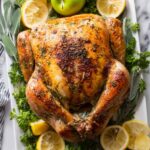
Herb Butter Roasted Thanksgiving Turkey Recipe
- Prep Time: 20 minutes
- Cook Time: 5 hours
- Total Time: 5 hours 20 minutes
- Yield: 16 servings
- Category: Main Course
- Method: Baking
- Cuisine: American
Description
This classic Thanksgiving turkey recipe guides you through roasting a juicy, flavorful turkey infused with fresh herbs and garlic butter. Perfect for holiday celebrations, this method ensures tender meat with crispy skin using a low and slow oven roasting technique.
Ingredients
Main Ingredients
- 1 20 pound turkey
- 1 onion, peeled and quartered
- 1 lemon, quartered
- 1 apple, quartered
- 0.75 ounce container fresh rosemary
- 0.75 ounce container fresh thyme
- 0.75 ounce container fresh sage
Herb Butter
- 1 cup unsalted butter, softened
- 1 teaspoon salt
- 0.5 teaspoon freshly ground black pepper
- 6-8 cloves garlic, minced
- Fresh chopped herbs (rosemary, thyme, sage)
Instructions
- Thaw Turkey: If the turkey is frozen, thaw it in the refrigerator allowing 24 hours for every 5 pounds plus an extra day for safety.
- Bring to Room Temperature: Remove the thawed turkey from the fridge 1 hour before roasting to let it come to room temperature.
- Preheat Oven and Prepare Rack: Adjust the oven rack to the center and preheat the oven to 325 degrees Fahrenheit.
- Make Herb Butter: Combine softened butter, minced garlic, salt, pepper, 1 tablespoon fresh chopped rosemary, 1 tablespoon fresh chopped thyme, and 0.5 tablespoon fresh chopped sage to create the herb butter. Reserve remaining herbs for stuffing.
- Prepare Turkey: Remove turkey from packaging, take out neck and giblets from cavities (reserve if desired), and pat dry with paper towels.
- Season and Stuff Cavity: Season the cavity with salt and pepper, then stuff it with the quartered lemon, onion, apple, and leftover fresh herbs.
- Apply Herb Butter Under Skin: Gently loosen the skin over the breasts and spread a few tablespoons of herb butter underneath with your fingers.
- Tuck Wings and Position Turkey: Tuck the wings underneath the turkey and place it on a roasting rack in a roasting pan.
- Brush Remaining Butter: Microwave the remaining herb butter for 30 seconds until softened, then brush it all over the outside of the turkey, including legs and wings.
- Roast Turkey: Roast at 325 degrees Fahrenheit for about 15 minutes per pound (approximately 5 hours for 20 pounds), or until internal temperature reaches 165 degrees Fahrenheit in the thigh and breast.
- Protect Breast Meat: About halfway through cooking, once the skin is golden brown, tent the turkey with foil to prevent overcooking the breast.
- Rest and Carve: After roasting, tent the turkey with foil and let it rest on the counter. Then move to a cutting board inside a sheet pan to carve and catch juices.
Notes
- Turkey Size: For smaller groups or preference for white meat, try a Turkey Breast recipe instead.
- Herb Substitution: Use 1 teaspoon dried herbs to replace 1 tablespoon fresh chopped herbs.
- Tinfoil Covering: Start roasting uncovered and cover with foil once skin is golden to protect breast meat.
- Disposable Roasting Pan: Place chopped celery and carrots on the bottom to elevate turkey and add flavor for gravy, though vegetables are not recommended to be eaten or used in gravy.
- Electric Roasting Oven: Follow the same directions as conventional oven.
- Convection Oven: Begin checking temperature after 2 hours as turkey cooks faster.
- Additional Tutorials: Refer to separate guides for How to Carve and How to Spatchcock a Turkey.
Nutrition
- Serving Size: 1 serving
- Calories: 576 kcal
- Sugar: 3 g
- Sodium: 250 mg
- Fat: 40 g
- Saturated Fat: 15 g
- Unsaturated Fat: 23 g
- Trans Fat: 0 g
- Carbohydrates: 5 g
- Fiber: 1 g
- Protein: 45 g
- Cholesterol: 130 mg


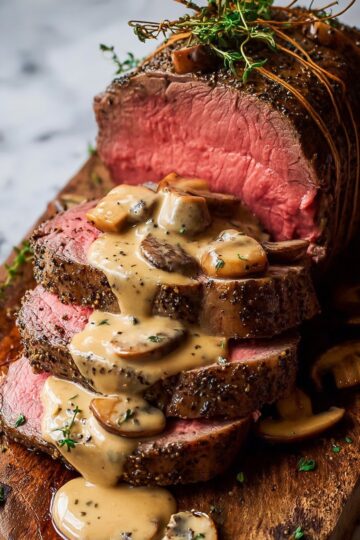

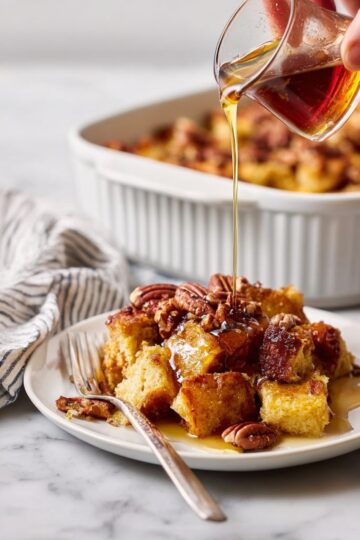


Leave a Reply